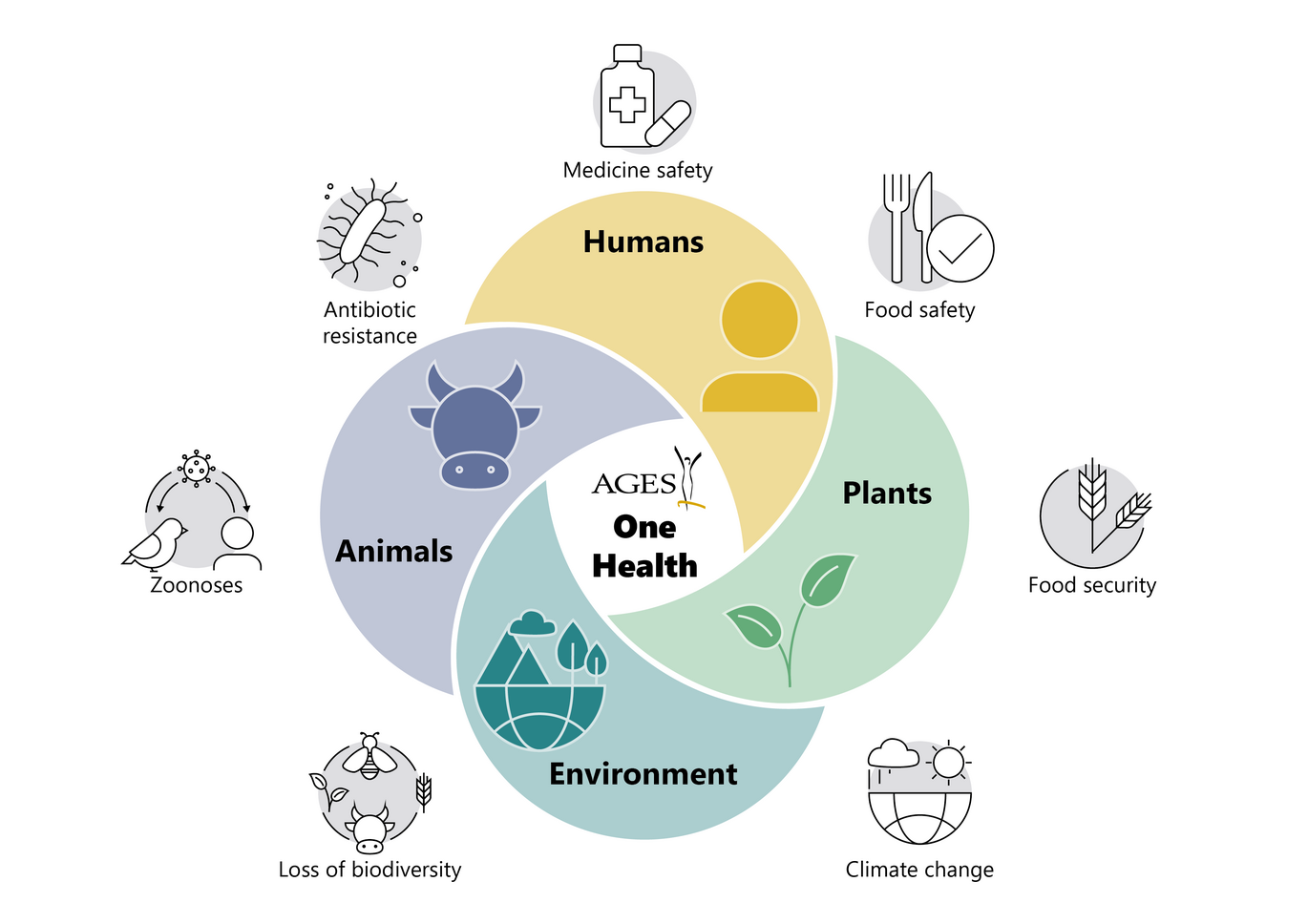One Health: Health for humans, animals, plants and the environment
The health of humans, animals, plants and the environment are closely interconnected and interdependent. We have been pursuing this One Health approach for over 20 years: Our experts from various disciplines work together across disciplines to collect, analyse, interpret and monitor changes in the environment and animal health and their impact on human health.
Antibiotic resistance
Antibiotics are important prescription drugs for the treatment of bacterial infectious diseases in humans and animals. They save many millions of lives every year. The One Health approach is essential in the fight against antibiotic resistance: resistance can spread rapidly between humans, animals and the environment.
Medicinal products
Medicines for humans and animals must be safe and effective. Quality deficiencies, the use of unauthorised medicines or even counterfeiting can have serious consequences for humans, animals and the food derived from them.
Food safety
Humanity has left its mark on the environment everywhere: Contamination with chemicals, heavy metals etc. is omnipresent. They find their way into our food and animal feed via animals and plants and can subsequently have an impact on human and animal health. The One Health approach helps to recognise negative effects as early as possible and take countermeasures, which is why food control is an important concern for us - from the field to the plate. Our experts also deal with sustainable food systems, food law, food waste and food loss.
Food security
We analyse, assess and evaluate soils, varieties, seeds and seedlings with regard to risks and quality. Food crops are increasingly affected by damage caused by drought and rainfall deficits: "climate-fit" plant varieties are therefore an important area of research for us. Our goal is sustainable, competitive agricultural production, fertile soils and healthy plants to ensure the supply of high-quality food for humans and animals.
Climate change
Timely and activeadaptation to climate changecan minimise or even prevent damage. One of our priorities as AGES is therefore to adapt to climate change, from soil to plants and animals to humans. Heat waves are no longer an exceptional phenomenon. Our heat mortality monitoring helps to further develop strategies to mitigate the consequences of heatwaves. Every person has the opportunity to make a contribution through their diet. Pulses, for example, are very interesting from an agricultural point of view - they cope well with the changing climate. At the same time, they are high-quality foods, especially as a good source of vegetable protein.
Loss of biodiversity
The warmer climate is bringing new plants to us that are originally native to warmer parts of the world and are now finding suitable conditions for survival here. These invasive plants can cause damage, displace native species and permanently change the structure and function of ecosystems. We therefore preserve thousands of different species of agricultural crops, medicinal plants and aromatic herbs in our gene bank.
Honey bees and wild bees play an important role in ecosystems and, together with other insects, are indispensable for the pollination of flowering plants and therefore for biodiversity and food security. Only a healthy, intact bee colony can fulfil these tasks. Our goal is to secure the honey bee population in Austria in the long term.
Zoonoses
Pathogens can be transmitted between humans and animals, directly, via vectors such as mosquitoes and ticks, but also via food. As a result of climate change, the distribution areas and transmission patterns of these pathogens and their vectors are changing, and new pathogens are also appearing in our country. We are monitoring this development closely and are also investigating so-called food-borne outbreaks. The aim of the outbreak survey is not only to stop the current outbreak, but above all to prevent such diseases in general in the future.
Last updated: 07.10.2024
automatically translated
